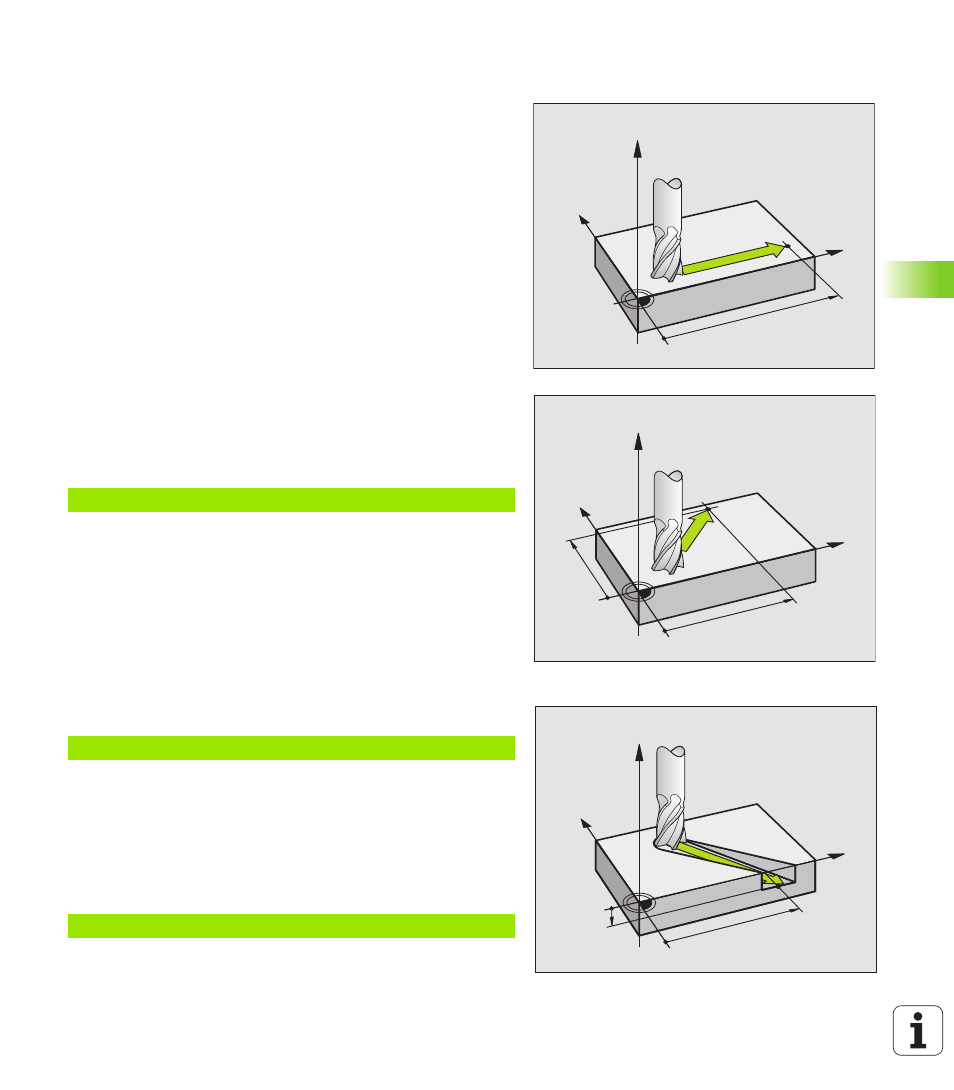2 fundamentals of path functions, Programming tool movements for workpiece machining – HEIDENHAIN iTNC 530 (340 49x-01) ISO programming User Manual
Page 175

HEIDENHAIN TNC iTNC 530
175
6.2 F
undamentals of P
a
th F
unctions
6.2 Fundamentals of Path
Functions
Programming tool movements for workpiece
machining
You create a part program by programming the path functions for the
individual contour elements in sequence. You usually do this by
entering the coordinates of the end points of the contour
elements given in the production drawing. The TNC calculates the
actual path of the tool from these coordinates, and from the tool data
and radius compensation.
The TNC moves all axes programmed in a single block simultaneously.
Movement parallel to the machine axes
The program block contains only one coordinate. The TNC thus moves
the tool parallel to the programmed axis.
Depending on the machine tool, the part program is executed by
movement of either the tool or the machine table on which the
workpiece is clamped. Nevertheless, you always program path
contours as if the tool moves and the workpiece remains stationary.
Example:
The tool retains the Y and Z coordinates and moves to the position
X=100 (see figure at upper right).
Movement in the main planes
The program block contains two coordinates. The TNC thus moves the
tool in the programmed plane.
Example:
The tool retains the Z coordinate and moves in the XY plane to the
position X=70, Y=50 (see figure at center right).
Three-dimensional movement
The program block contains three coordinates. The TNC thus moves
the tool in space to the programmed position.
Example:
N50 G00 X+100 *
N50
Block number
G00
Path function "straight line at rapid traverse"
X+100
Coordinate of the end point
N50 G00 X+70 Y+50 *
N50 G01 X+80 Y+0 Z-10 *
X
Y
Z
100
X
Y
Z
70
50
X
Y
Z
80
-10